Sellado en Vidrio en la Industria Cosmética

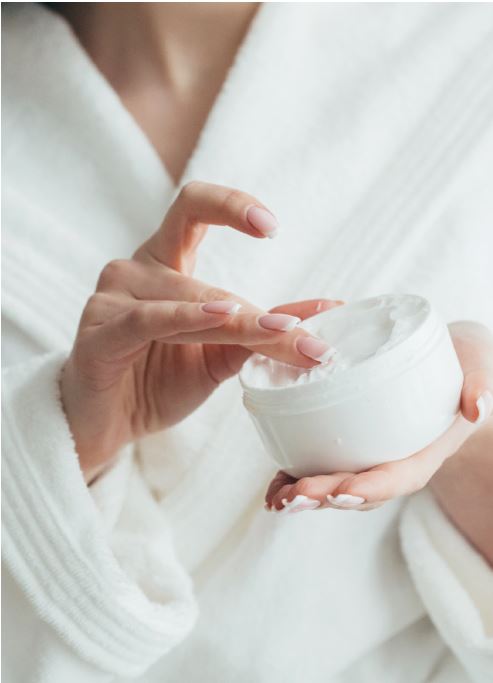
The beauty and cosmetics industry is constantly flourishing, with countless new cosmetic products making their way onto retail shelves every year. According to Business Wire1, in 2018 the global cosmetic market is at $507.75 billion and is estimated to reach $758.45 billion by 2025, growing at a rate of 5.9%. It is no surprise then that cosmetics manufacturers are investing in developing new products to meet this demand.
Premium packaging
The industry sees consumer trends in abundance and some of these include consumer demand for easy to use, yet premium packaging that is also environmentally friendly.
The demand for premium packaging is on the rise as consumers seek out ways to treat themselves at home. An area of particular growth is in high value anti-aging skincare. A report by Research and Markets says there is an increased demand for premium packaging, and glass tends to infer quality to consumers. They look for products with premium packs when purchasing high ticket items. Many consumers also buy these products as gifts, thereby driving the demand for premium packaging in the market.
Environmental concerns
According to Regina Haydon, Global Food & Drink Analyst, Mintel2,consumers are increasingly demanding an ethical stance from beauty brands. Packaging is now central to environmental thinking, whether it is recyclable, made from recycled materials or biodegradable.
This focus on recyclability is also driving the popularity of certain packaging materials. Marie Lavabre, founder of beauty brand KINN says, “I expect to see more of a shift towards glass, as the consumer becomes more aware of the harm plastic is causing when not disposed of safely or recycled.”
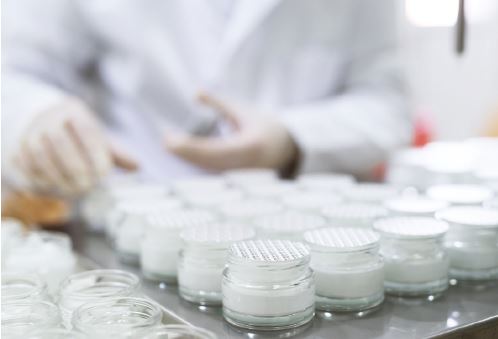 The rise of online
The rise of online
Another factor for the industry to consider is the products’ route to market. According to Reuters3, e-commerce as a distribution channel is expected to grow rapidly, with cosmetic products, such as skin care, hair care, and fragrances the most-sold products online. In addition, smartphone shipments increased to 1.53 billion in 2017, and are expected to grow till the end of 2023.
The return of glass
As a result of the increase in focus on recyclability, there has been a significant shift towards the use of glass over plastic. Glass is the most heavily used material for luxury cosmetics packaging according to John Nelson, commissioning editor at Smithers Pira. François Damide, founder and CEO of Crafting Beauty4 says, “The consumer automatically equates a glass package with an expensive product – and as more desirable than a comparable product in plastic.”
With this in mind, manufacturers need to ensure the packaging around their products portrays a premium message particularly with a high retail price point. They also need to be aware of the demands consumers are placing on eco-friendlier products and packaging.
A key priority for food and beauty packaging alike is that the products are secure in transit and then, when they arrive on shelf are tamper-free, safe and sellable. Creams, lotions and liquids also need to remain airtight to ensure product integrity and longevity.
The challenges of sealing to glass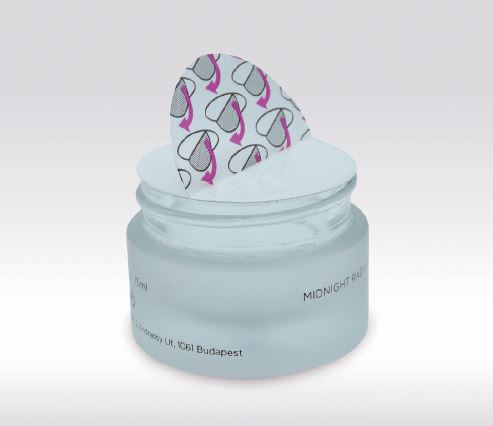
Beauty cream and lotion packaging has historically been fraught with issues such as leakage or caking – where the product inside the jar is exposed to oxygen and therefore turns a yellow colour, hardens and deteriorates.
As well as impacting the brand’s reputation, packaging that doesn’t sufficiently protect against leaks drives up the cost incurred by product returns and ultimately factory efficiency as the production line is required to refill orders.
With glass on the increase in the luxury cosmetics arena, there is a growing demand for secure packaging solutions. The containment of liquids in glass in particular has been a big challenge. To date, the most secure sealing process for such a mix relies upon a steam capping process that is slow, expensive and leads to packaging that is often secured too tightly for consumers to open.
Many manufacturers have persevered with the use of creams in glass jars and used a shive plastic insert, which is expensive and does not guarantee a hermetic seal. Additional weaknesses in this sealing process appear when it is used with creams and moisturisers with a high oil content. This is because the oil penetrates the neck area rendering the shive useless as a seal. In addition, the process is not watertight, making it unsuitable for use with some liquids.
New technologies to meet glass challenge
With glass such an important player in the beauty packaging market, overcoming such sealing challenges have become increasingly important. Thanks to advancing technology and over two years of extensive development from Selig, a break-through solution is now available in the form of a new heat seal. This innovative, EU regulatory compliant, sealing layer provides a hermetic seal to glass and is fully resistant to oil and emulsions that are typical in the cosmetics industry.
The formulation used in this new heat seal resists oil penetration better than any other seal on the market today. This, coupled with its ability to work on different glass treatments and glass containers of any shape or size, means a whole new world of packaging options are open to beauty industry manufacturers. It fully negates the need for the plastic shive insert, thereby saving assembly time, additional materials and ultimately costs.
Selig’s DELTASEAL™ 9000, which features the new GlassFuze™ heat seal, consists of an aluminium foil coated with GlassFuze™, laminated to a white-lined folding box board. After the DELTASEAL™ 9000 liner is inserted into the closure, the lined closure is then applied to the filled glass container and sealed by induction. The closure retains the liner material behind a retention bead while allowing it to rotate freely. When removed or opened by the consumer, an audible ‘crack’ is heard during separation. This is created as the materials separate to leave a clean foil on the container that protects the product from contamination, and the board liner in the closure for reseal purposes.
The foil membrane provides excellent barrier resistance and protects the product from moisture and oxygen, thereby, extending the product’s shelf-life and preventing leaks. In addition, the foil – which covers the entire container opening – can be custom printed with the brand, company or any other promotional or instructional graphics.
Lift ‘n’ Peel™
Selig has also launched the GlassFuze™ heat seal technology on its award winning Lift ‘n’ Peel™ range, offering consumers an easy to remove seal via the half-moon tab. The single piece seal provides a clean, low cost hermetic seal and in recent consumer research conducted by Selig, this was the seal of choice for sealing food products. The research carried out with consumers in focus group discussions asked detailed questions to gauge their experiences with milk, peanut butter, mayonnaise and protein powder packaging. Although ‘ease of opening’ was ranked as important, ‘safety’, ‘leak prevention’ and
‘maintaining freshness’ were ranked as extremely important.
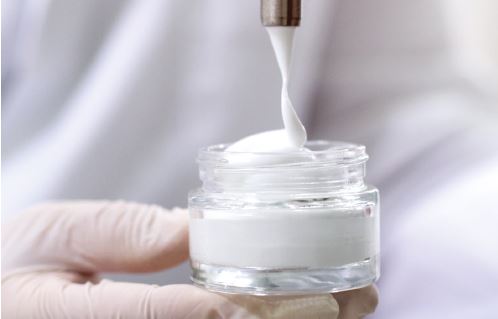 Industry challenges
Industry challenges
By using these new foil seal options, manufacturers can also fully eradicate the problem of product ‘caking’ during storage and distribution, as the seal is 100% airtight. It also provides a form of tamper-proofing, as the clean seal discourages consumers from opening products that aren’t the official ‘tester’ samples.
In addition, companies can brand the seal with their own logo that inspires consumer confidence and deters from counterfeiting.
Due to product sealing innovation from Selig, the beauty and cosmetic industry can now comfortably package their products in glass containers knowing they are fully sealed and secure. Any cream or liquid, no matter what the ingredients, can be safely and hermetically secured to glass containers. In summary, GlassFuze™ brings the following benefits to the beauty and cosmetic industry:
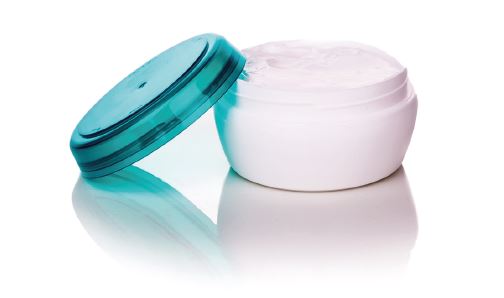 Hermetic seal to glass, even with oily creams and liquids
Hermetic seal to glass, even with oily creams and liquidsWhat beauty products might this be relevant for?
The list is vast, but in general any cream, liquid, lotion, serum or oil can benefit from being safely sealed in glass, including products that might contain alcohol, acetone or oil. For example, nail polish removers, acne products containing salicylic acid or make-up too.
With the skincare market expected to be worth over 148 billion USD worldwide by 2020, according to Statista, the benefits of cost-effective, yet clean and easy to use seal products for glass containers is vast.
Manufacturers can now answer consumers’ demands for easy to use, premium, environmentally friendly beauty packaging, as well as for increased productivity, reduced returns and longer product life by using this new range of induction sealing products.









Gracias por crear una cuenta y darnos la posibilidad de atenderle de una forma más eficiente y con mayor rapidez.
Le hemos enviado un correo electrónico para verificar su cuenta.